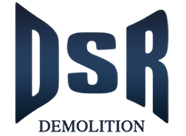Swillington Brickworks
Demolition of Swillington Brickworks
Demolition of Swillington Brickworks
Client: Hanson BrickValue: £520,000Completed: 2015
Client: Hanson Brick
Value: £520,000
Completed: 2015
DSR Demolition worked for long-standing client Hanson Building Products, a prestigious brickmaking company, to complete the deceptively complex project at Swillington near Leeds.
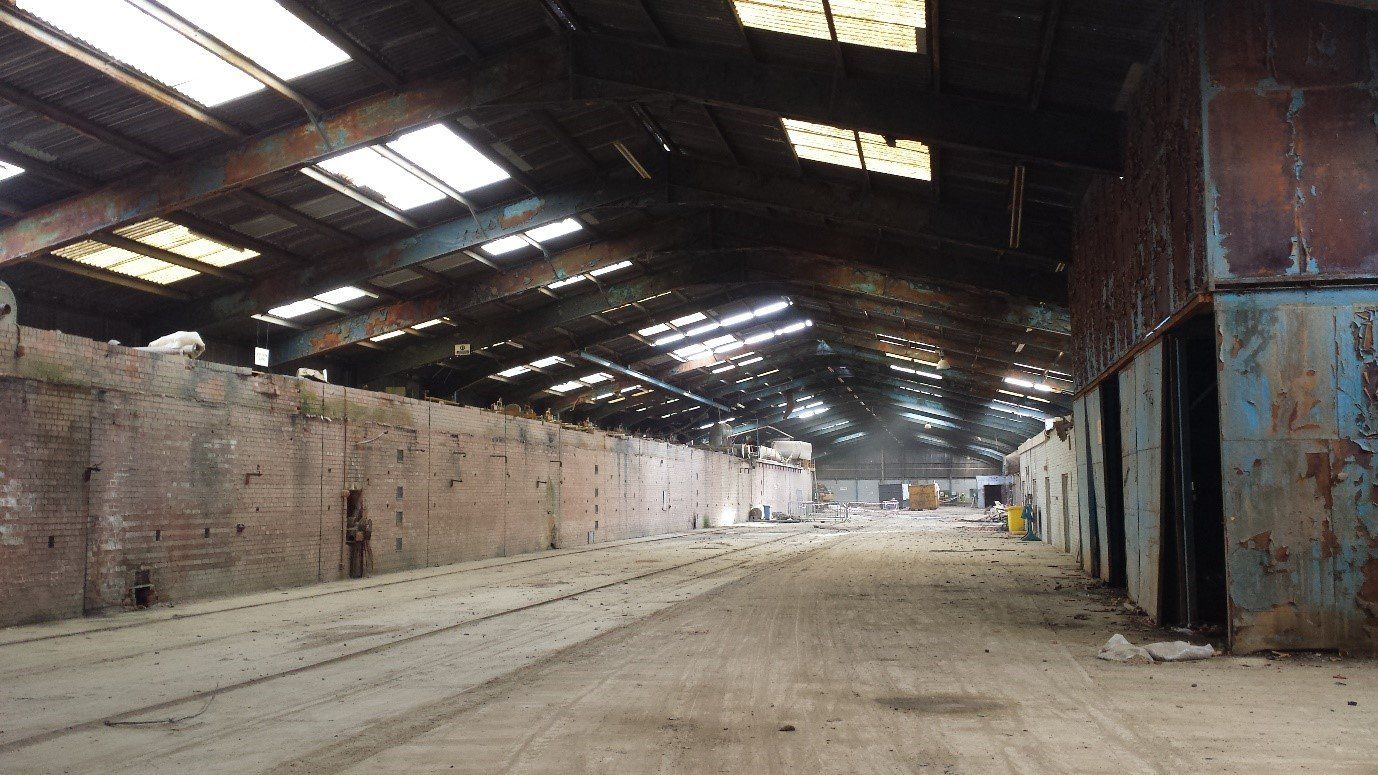
Kiln structure containing asbestos and RCF
Button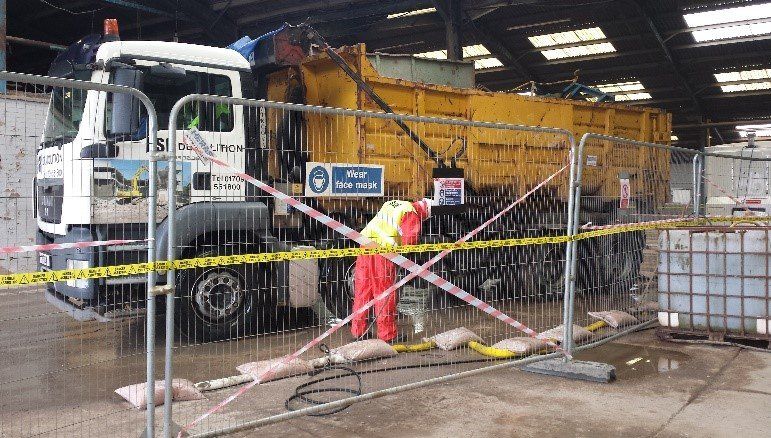
Decontamination on leaving the asbestos/RCF exclusion zone
Button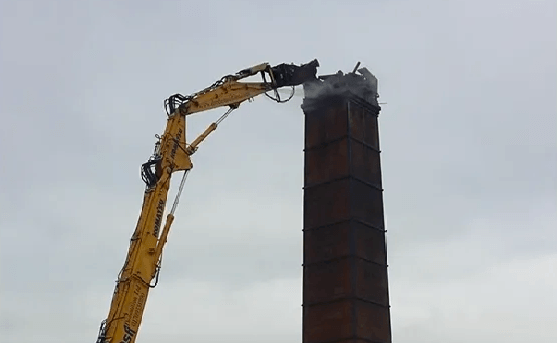
High reach work to bring down brick chimney
Button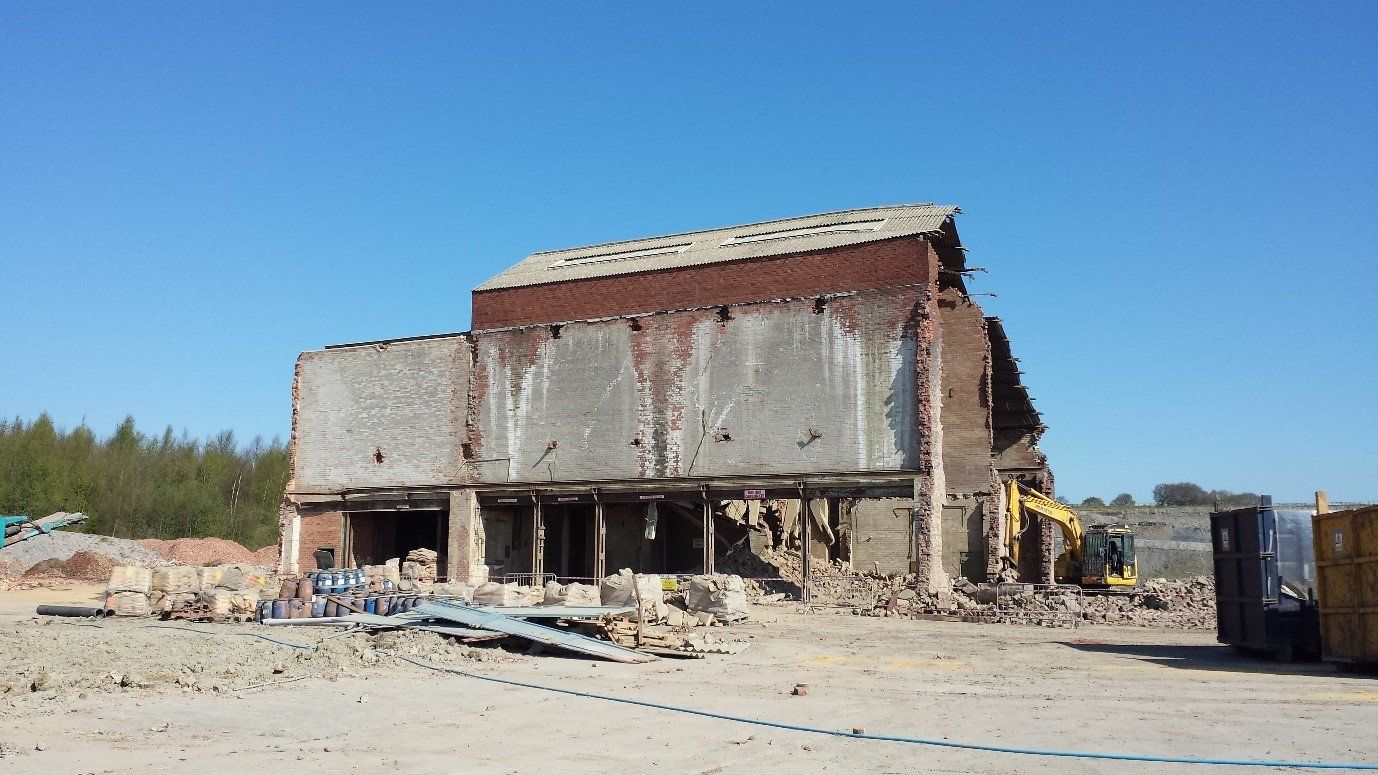
Structure containing bats remained until cleared by an ecologist
Button
Demolition of main brickworks after deconstruction of the interior kiln
Button
On site crushing following demolition
Button
The project began with an extensive strip out of over 100 kiln carts in the main factory building. These were part of a system of tracks and kiln ovens, and needed to be hauled into a suitable work area first. The kiln carts comprised a steel chassis on wheels, with two layers of very dense ‘fire-brick’ sandwiching a Refractory Ceramic Fibre (RCF) lining. The nature of RCF is similar to asbestos, so works were undertaken in a controlled environment with heavy water suppression used inside an exclusion zone. Over 100 kiln carts were safely dismantled and segregated into waste streams.
The kiln oven structure itself was 110m long and containing asbestos cement sheets and brown asbestos packing fibres in small pockets throughout. This resulted in a non-standard procedure being adopted whereby the kiln was demolished and the asbestos removed concurrently under heavily controlled conditions. We sought HSE advice and liaised with the local HSE office to reach this methodology which proved successful. Throughout, we undertook regular audits on our asbestos contractor to ensure the HSE’s advice was followed at all times.
Aside from these significant unusual works, there was also some straight forward demolition to be done. The site housed a number of different structures in various shapes, sizes, and states of repair. Because of the lengthy period that brickworks had been closed down, local fauna appeared to have made the buildings into their home. There was a barn owl, a tawny and owl, and several pipistrelle bats spotted in the area. We liaised with an ecologist to clear various sections of the building for both roosting bats and birds. He had drafted a report designating several potential areas. This meant that we had to stop at strategic points during the demolition of various buildings to allow the ecologist to inspect and clear each area one by one. Once cleared, we could proceed with the demolition.
There was a portion of the demolition classed as high reach work, including former machine house and a chimney. Both were successfully brought down by our experienced driver using our high reach machine.
We also undertook a large amount of asbestos cement roof sheet removal manually, with operatives working from a scissor lift and using hand tools, dust suppression and air monitoring.
Towards the end of the project our client asked us to excavate a service trench where they instructed lay new cables. We plotted this out carefully and had the trench ready in time for the new cables by our electrical contractor.
The project concluded with crushing the clean, tested rubble that arose from the works and this was stockpiled for the client’s future use.
